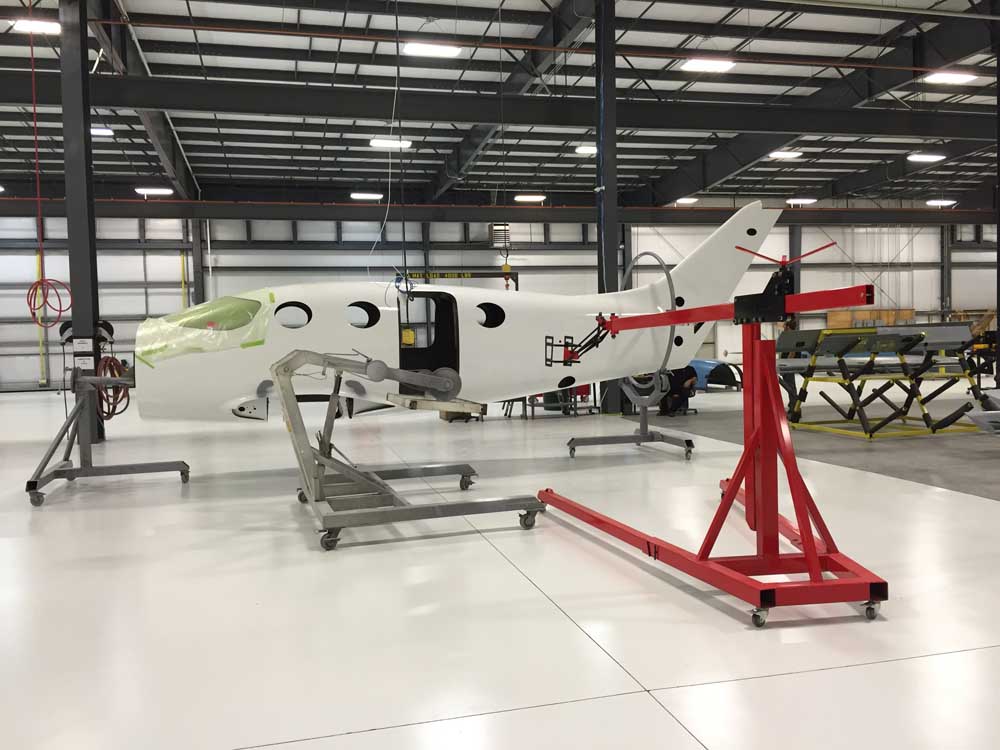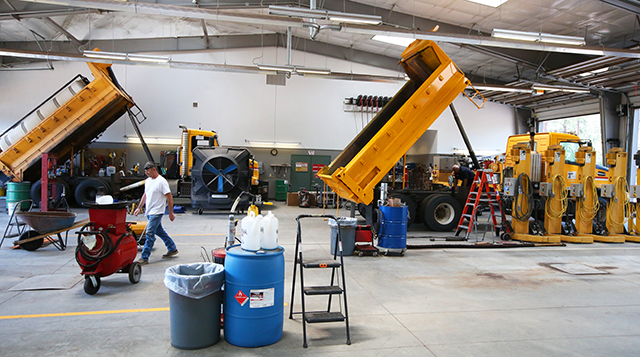Epic Aircraft prepares to begin production at Bend plant
Published 12:00 am Wednesday, August 22, 2018

- An E1000 being built for flight testing stands in the final assembly area of Epic Aircraft’s Bend factory. (Submitted photo/Epic Aircraft)
Bend’s Epic Aircraft is closer than it’s ever been to becoming a certified airplane manufacturer.
Anticipating regulatory approval by the end of the year, the company employs about 250 people and runs two shifts fabricating components for the E1000, a single-engine turboprop built with carbon fiber. Executives hoped to hear this week that the Federal Aviation Administration will send pilots from Seattle to fly Epic’s two test planes.
Trending
If the FAA’s test flights go as expected, Epic could earn certification this year and begin delivering E1000s to customers early next year.
But Epic can’t sell a single E1000 until it achieves certification.
“If you don’t have a type certificate, you’re still an experimental airplane,” said Larry Anglisano, editor of Aviation Consumer magazine.
Even without that critical regulatory go-ahead, Epic has taken reservations on 85 planes, which means potential customers have put down 1 percent of the $3.25 million purchase price, Director of Sales and Marketing Mike Schrader said.
“We think that once we get certification … that order book is just going to explode,” Sales and Marketing Manager Gale Evans said.
CEO Doug King is so focused on the final stages of the certification process, he couldn’t make time for an interview with The Bulletin, Evans said.
Trending
During a visit to the factory at Bend Municipal Airport last week, workers were busy in almost every area: building components, running quality tests, trimming and drilling. Custom-built tools stood ready to use in final assembly. At the end of the line, a team of people carrying clipboards made sure no one walked too close to a test plane that was pointed toward an open bay.
Epic executives hoped to put the E1000 on the market in 2016, but they encountered several challenges, including structural testing. The E1000 finally cleared that hurdle this summer, which is one reason they’re so confident, Evans said.
Epic began as a kit plane maker, which gained such a loyal following that a group of owners helped bail out the company after it foundered under former CEO Fred “Rick” Schrameck. He awaits sentencing on a federal wire fraud charge.
Under new ownership in 2012, Epic began the quest for FAA certification of a factory-built plane. “We are very lucky that we have an owner, investor that is very committed to the program,” Evans said.
“He actually owns an Epic and flies an Epic himself.”
Epic’s main investor is Vladislav Filev, who owns the Russian aviation and aerospace company S7 Group.
If Epic stays on schedule for certification this year, the company could catch the most favorable market for business-class airplanes in more than a decade.
Global turboprop plane sales were up 9.7 percent in the first half of this year, compared with the same period of 2017, according to the General Aviation Manufacturers Association in Washington, D.C.
It is a very small market, however. A total of 260 single-engine and multiengine turboprops were sold around the world in the first half of the year. And Epic will be competing with established single-engine turboprops, including the Daher TBM 930 and the Pilatus PC-12 NG.
Another potential competitor is the Cirrus SF50 Vision Jet, a single-engine jet, which is like the E1000 in that it’s also made from composite material rather than metal.
The E1000 would probably appeal to business owners who are looking to upgrade from a piston-engine plane, Anglisano said.
Turboprops are powered by a jet engine that drives a propeller, while aircraft piston engines work the same way as car engines.
It has seating for six, and it can make regional flights, for example from the Northeast to Florida, or the Midwest to California, without stopping for fuel, he said.
In 2014, Anglisano flew an Epic kit model, the LT, which formed the basis of the E1000’s design.
Fast, fuel-efficient and powered by a familiar Pratt & Whitney engine, the LT seemed to set the stage for a successful factory-built plane, he said. “It’s an ultra-modern turboprop.”
— Reporter: 541-617-7860, kmclaughlin@bendbulletin.com








